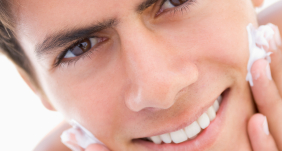What’s the science behind anti-pollution skin care?

Dr Fussell is senior research fellow and scientific communicator on the health effects of air pollution for the university, meaning she’s well-placed to discuss the practical science behind the anti-pollution skin care trend.
We asked her how beauty and personal care products can effectively tackle the issue of airborne pollution, and discussed the areas of research currently being investigated by the industry.
The science behind the trend
According to Dr Fussell, motor vehicles, power stations and factories are the major culprits behind urban air pollution, with pollution particles (also known as particulate matter, or PM) made up of oxides of nitrogen and ozone.
“Since the skin is an organ that is in direct contact with these air pollutants, an association between air pollution and skin damaging effects leading to skin ageing is certainly possible,” she confirmed.
She explained that the skin’s layers include protective proteins that guard against moisture loss and premature ageing - keratin in the outer layer and collagen in the lower layer.
“It is likely that the defensive capacity provided by keratin and collagen is not unlimited,” Fussell said, “and if air pollution were to exceed the protective potential, disturbances in or even damage to skin structure could occur.”
What are the main types of impact on the skin?
“Information regarding the mechanisms by which air pollution can damage skin is limited,” according to the Dr Fussell. However, several studies have begun to investigate the issue, and found pollution can have various types of impact onto the skin, she explains. They are:
- Ageing: Studies comparing the skin of women living in urban and rural areas have found that those who are exposed to higher levels of traffic-related pollution, had more visible signs of aging in the form of hyperpigmentation (age spots) and wrinkles, than those living in the countryside.
- Hydration and barrier function: A study has also shown an association between compromised skin hydration and barrier function in women living in areas of poor air quality than that of women in the less polluted locations.
- Aggravating skin conditions: Studies also suggest that air pollution might not only affect healthy skin, but may also aggravate pre-existent skin diseases, such as atopic dermatitis and eczema.
What we don’t yet know
Dr Fussell suggests that some people may be more susceptible to the effects of pollution, due to sensitive skin. She also notes that the impact of pollution may vary depending on the individual’s exposure pattern, ethnic group, skin type and age.
“Further studies are however required to prove these possible susceptibilities,” she notes. Indeed, the expert suggests that further study into pollution’s impact on the skin is needed across the board.
Currently, she says, cosmetics companies are investigating topically applied products aimed at:
- Helping to reduce particle load on skin
- Restoring and strengthening the skin’s protective barrier function to reduce pollutant penetration
- Reducing trans-epidermal water loss and thus improve skin hydration
- Replenishing antioxidant reserves, reducing inflammation and blocking molecules in our cells that are thought to be instrumental in the way in which air pollution compromises our skin.
- Protecting skin from harmful UV rays, which make exacerbate the effects of airborne particles on skin.
Dr Julia Fussell, Senior Research Fellow and Scientific communicator on the health effects of air pollution at Kings College, will deliver a keynote speech on Increasing Atmospheric Pollution and its Damaging Effects on Skin from 11.15am to 11.45am on the first day of the in-cosmetics Group’s Formulation Summit 2016, held from 19-20 October at AMBA Hotel in Marble Arch, London.




















